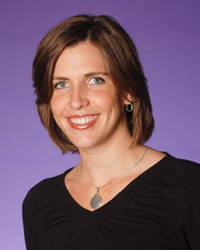Imagine the job interview. A TCU political science graduate sits across from the manager of a firm. Did this student ever imagine that the selling point on her resume, giving her that slight advantage over the other candidates, was the product of a group assignment in her Campaigns and Elections course?
Dr. Joanne Green, Chair of Political Science, is hopeful that the skills learned through an assignment in her POSC 31113 – Campaigns and Elections course are exactly those that students use to market themselves upon graduation. The group assignment has been a component of the course for some time. After substantial research about their candidate, the political climate, and the electorate, as a group, students present their campaign plan. This fall, Dr. Green added an additional component. Each group of students now creates a 30-40 second commercial for their assigned Congressional candidate who is running for election. Students must consider elements such as how the commercial fits into their campaign plan, to whom it is aimed and why, and where the commercial will be shown. After taking part in college and University conversations about creativity surrounding Sir Ken Robinson’s talk last spring, Green became convinced that promoting creativity is increasingly important. This served as the catalyst for the addition to the assignment.
Dr. Green doesn’t consider herself technologically advanced. She instead describes herself as “technologically competent.” Green developed a short movie on her own before she created this assignment, which assured her that if she was capable of doing so, the majority of her students would be as well. She has relied on the New Media Writing Studio (NMWS) to guide her students in the use of the tools available to develop such a commercial.
The NMWS staff helps faculty across campus incorporate new media into their writing assignments through one-on-one consultations, monthly Cool Tool Brown Bag workshops, and the Digital Writing Group. The Cool Tool workshops are informal meetings where faculty share digital tools for research, writing, and teaching. Faculty may work on their own digital writing projects with friends and colleagues where they can share progress and give and receive feedback in the Digital Writing Group. Instructors from any discipline can gather to work on various types of digital presentations, web design projects, video, infographics, and more. Dr. Curt Rode, the Director of the NMWS, and Joanna Schmidt, Assistant Director of the NMWS, are the staff devoted to the NMWS.
Rode and Schmidt assist faculty who have older assignments they wish to update to include new media writing or to help identify methods to incorporate new media writing into their courses. Additionally they assist faculty in rubric development for these assignments and help faculty and students navigate copyright issues pertaining to digital media. Dr. Rode and Ms. Schmidt also teach students and faculty how to use the tools that may be utilized to create new media writing assignments and encourage them to practice while in the lab. Students and faculty find the tutorials on the NMWS website helpful refreshers as they complete projects.
Rode encourages faculty to break projects up into tiered assignments so that students are developing the content throughout the semester. For example, Green requires that students first identify the production plan and distribute the workload. Next, students develop a storyboard or sketch-out of the assignment, which includes the visual elements, timing, and sound ideas for the commercial. Then students write the script based upon the previously completed storyboard. Faculty may check out the NMWS during open lab hours, reserve the laboratory for their classes, request the staff to conduct a presentation or workshop for their courses, or seek advice with assignment design and software education from the NMWS staff. Rode and Schmidt request that faculty plan ahead and submit the project order form via the NMWS website at www.newmedia.tcu.edu.
Communication is ever-evolving and graduates with experience using different forms of writing will be a valuable asset to employers. Rode reminds us that “we need to recognize that more and more communication is now taking place visually and digitally; as a result, our writing instruction should help students anticipate how they will communicate effectively after they leave the University.”
 This article was written by Gina Hill, Department of Nutritional Sciences and 2014 Koehler Center Fellow, for the Spring 2013 Issue of Insights Magazine.
This article was written by Gina Hill, Department of Nutritional Sciences and 2014 Koehler Center Fellow, for the Spring 2013 Issue of Insights Magazine.